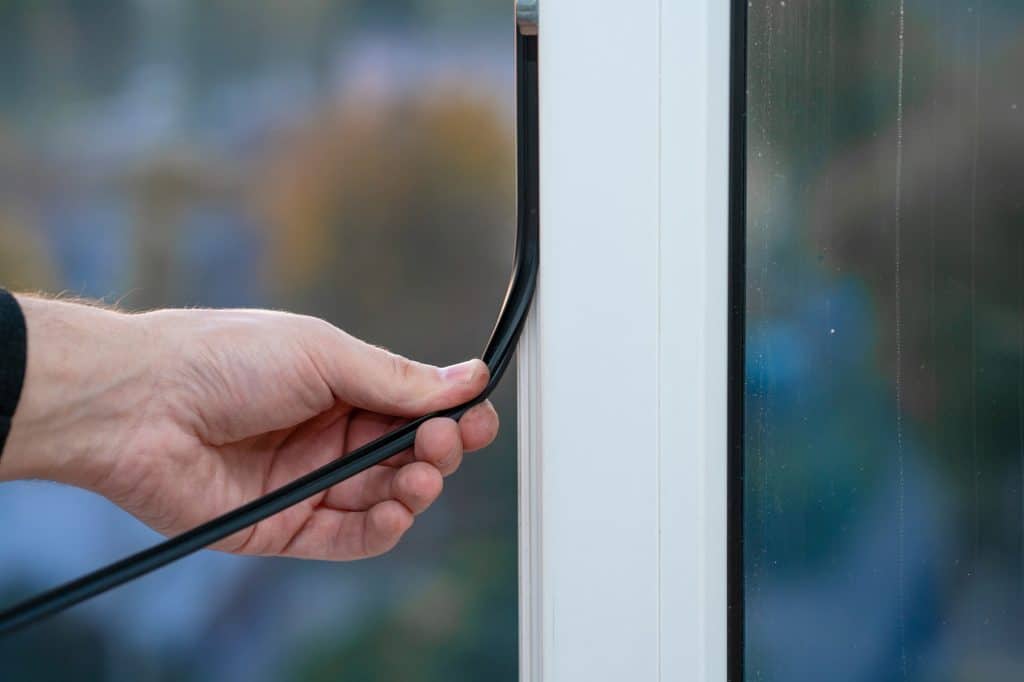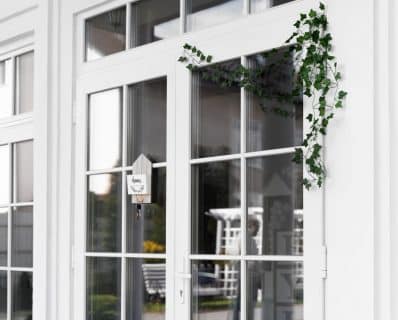How to Increase Your Windows Energy Efficiency

Contents
- 1 Inspect for Damages and Wear
- 2 Re-caulk and Seal
- 3 Install Weather Stripping
- 4 More Details on Weather Strips
- 5 Upgrade to Double or Triple Glazing
- 6 Add Window Insulation Film
- 7 Utilize Heavy Curtains or Drapes
- 8 Consider Storm Windows
- 9 Regular Maintenance
- 9.1 Cameron Williamson
- 9.2 How Сan I Make My Windows More Energy-Efficient for Winter?
- 9.3 What Are Some Quick Fixes to Improve My Windows’ Energy Efficiency?
- 9.4 Why Should I Consider Replacing My Windows With Energy-Efficient Ones?
- 9.5 How Do Energy-Efficient Windows Help in Reducing Heating Costs?
- 9.6 What Steps Should I Take to Prepare My Windows for Winter?
Winter can be a time of magic, transforming landscapes into winter wonderlands, but it also brings with it the biting cold, harsh winds, and the potential for snow and ice. Your windows ensure your home remains cozy and warm, acting as a barrier between you and the frosty world outside. To maximize windows energy efficiency and ensure your indoor sanctuary remains undisturbed, it’s crucial to prepare your windows for winter.
Inspect for Damages and Wear
Consistent wear and tear or unforeseen incidents can lead to minor damages in your windows that you might overlook. But even tiny cracks or gaps can have a significant impact during winter.
- Even minor cracks can lead to heat loss. Check each pane thoroughly, and if you spot damages, consider replacing it promptly;
- A compromised seal can drastically reduce your window’s efficiency. It’s essential not just to look for visible damage but also to feel around the window edges for drafts;
- Sometimes, gaps can form in the frame or between the window and the wall. These can be particularly problematic, leading to considerable heat loss.
Attending to these issues in advance can prevent more significant problems and heat loss in the dead of winter. It is also a good idea to consider complete window replacement not to waste your time on DIY projects.
Re-caulk and Seal
Over time, even the best caulking will degrade, reducing its effectiveness in insulating your home. Proper window replacement pickering can help you with that.
- Choose the right caulk. Not all caulking is created equal. For windows, it’s best to choose a waterproof and flexible caulk that can expand and contract with temperature changes;
- Clean the area thoroughly before applying the new caulk. Cut the nozzle at a 45-degree angle and ensure a smooth application using a caulk gun. For an even finish, smooth out the caulk with a spatula or a fingertip;
- Allow the caulk to dry completely before testing your windows. This might take up to 24 hours, depending on the product and the prevailing weather conditions.
Caulking can deteriorate over time due to exposure to the elements. Before winter sets in, re-caulk any areas where the existing material has become brittle or is peeling away. By ensuring a tight seal, you minimize drafts and heat loss. Thus, you’ll increase your windows energy efficiency, especially with the help of the Energy Star program.
Install Weather Stripping

Weatherstripping is a lifesaver for the little nooks and gaps that let in the cold during winter.
- There are many different options, like V-strip (tension seal), adhesive-backed foam, and door sweeps;
- Understand your window’s design to select the most suitable type;
- Clean the surface first. For adhesive-backed strips, simply cut to size, peel, and stick. For others, like V-strips, you’ll need to carefully measure, cut, and fit into place.
Weatherstripping acts as an added barrier against cold drafts. Installing it is a cost-effective way to boost your window’s insulation properties. It’s best suited for movable window components, like the sash.
Types of Weather Stripping
Weather stripping is essential in ensuring those pesky drafts are kept at bay, and your home remains a warm sanctuary during winter. Among the popular choices, you’ll find the V-strip, often called the tension seal. Crafted from materials like:
- Plastic;
- Vinyl;
- Or even metal.
Its V-shaped design, with the open part of the “V” facing outward, makes it an excellent pick for the sides of double-hung or sliding windows. Its durability and ability to spring back to its original form after long compression periods make it a homeowner favourite.
Moving on, there’s the adhesive-backed foam tape. Typically constructed from open-cell foam, rubber, or EPDM (synthetic rubber), this comes in rolls of different thicknesses and widths. While it’s often used for the tops and bottoms of window sashes and occasionally in door frames, its real charm lies in its cost-effectiveness and ease of application. However, one might need to replace it more frequently than other options due to its limited lifespan.
More Details on Weather Strips
Door sweeps, usually more associated with doors than windows, can be a boon for oversized windows that slide or swing. Made from materials like aluminum, stainless steel, or plastic, their brushes created from nylon, vinyl, sponge, or felt help seal out drafts, debris, and even insects. If weather stripping isn’t helping, one may think about doors replacement.
Then there’s the compression strip. Made from materials like EPDM, vinyl, or sponge rubber, it’s designed to fit specific grooves and operates by compressing between two surfaces. When used for double-hung windows or casements, these strips shine, offering longevity and resilience against temperature extremes.
Silicone rubber strips also deserve a mention. Crafted from flexible silicone, they’re often presented as adhesive-backed tapes. Their flexibility makes them suitable for irregular or misaligned windows, creating a snug seal and displaying remarkable resistance to temperature fluctuations.
Lastly, we have the traditional felt strips. Composed of natural or synthetic fibres, these can either be rolled or reinforced with metal strips. Typically wrapped around the window frame or sash, they’re a nod to older weatherproofing methods. Their affordability is a significant advantage, although they might not match the efficiency of modern materials and can wear out faster, especially in damp settings. To exclude dampness from your life, we recommend conducting basement waterproofing. However, the final decision is up to you!
In sum, choosing the ideal weather stripping revolves around your specific window needs, its architecture, and your budget.
Upgrade to Double or Triple Glazing
If you’re still working with single-glazed windows, consider upgrading to double or even triple-glazing. These windows have great insulation properties because they trap air or gases between the panes, acting as a sort of buffer against cold external temperatures.
Add Window Insulation Film

Window insulation film is a transparent layer that can be applied to your window’s interior. It creates an insulating air pocket between the film and the glass, significantly reducing heat loss. Plus, it’s easily removable when spring arrives.
Utilize Heavy Curtains or Drapes
Thick curtains or drapes don’t just add a touch of style to your room; they also act as an added layer of insulation. Closing them during the chilliest parts of the day or night can trap heat inside and prevent cold drafts from cooling down your room.
Consider Storm Windows
It might be worth investing in exterior storm windows if you live in an area with particularly harsh winters. These add an extra layer of protection against the elements and can be removed when warmer weather returns.
Regular Maintenance
Lastly, remember the importance of regular maintenance for your windows energy efficiency. Cleaning your windows and ensuring their moving parts are well-lubricated ensures they function optimally, reducing the chance of drafts and ensuring a snug close. If, for some reason, your windows become frozen – don’t worry. We have a guide for it. Read our “How To Open a Frozen Window” article.
Expert opinion
Cameron Williamson
Having spent many summers helping his father with their family business, now Cameron Williamson is an author with extensive experience in all things doors and windows. Though Cameron eventually found his calling as an author, the skills and knowledge he's gained in those years help him make other people's lives better with his technical insights.
Preparing your windows for winter isn’t just about ensuring your comfort – it’s also about windows energy efficiency and reducing heating bills. By taking these steps, you not only cocoon yourself in warmth but also act environmentally responsible. As winter approaches, give your windows the attention they deserve, and they’ll reward you with a cozy, warm abode to relax in.
-
How Сan I Make My Windows More Energy-Efficient for Winter?
To increase your windows’ energy efficiency, install weather stripping to seal gaps and prevent drafts. Use insulated curtains or blinds to reduce heat loss. Consider upgrading to energy-efficient vinyl windows from HTR Windows and Doors for the best long-term solution. -
What Are Some Quick Fixes to Improve My Windows’ Energy Efficiency?
You can apply weather stripping and caulk any gaps around your windows. Use window insulation film to add an extra layer of protection against cold air. These simple fixes can significantly reduce heat loss and improve your comfort. -
Why Should I Consider Replacing My Windows With Energy-Efficient Ones?
Replacing your windows with energy-efficient models from HTR Windows and Doors reduces heat loss and lowers energy bills. New windows offer better insulation, preventing drafts and maintaining a stable indoor temperature. This upgrade also increases the overall value of your home.
-
How Do Energy-Efficient Windows Help in Reducing Heating Costs?
Energy-efficient windows have better insulation, reducing the amount of heat that escapes from your home. This means your heating system doesn’t have to work as hard, leading to lower energy consumption and reduced heating costs. -
What Steps Should I Take to Prepare My Windows for Winter?
Start by inspecting your windows for any cracks or gaps and sealing them with caulk or weather stripping. Install storm windows if you have them, and consider adding heavy curtains for extra insulation. For the best results, invest in energy-efficient windows from HTR Windows and Doors to ensure maximum warmth and efficiency.













